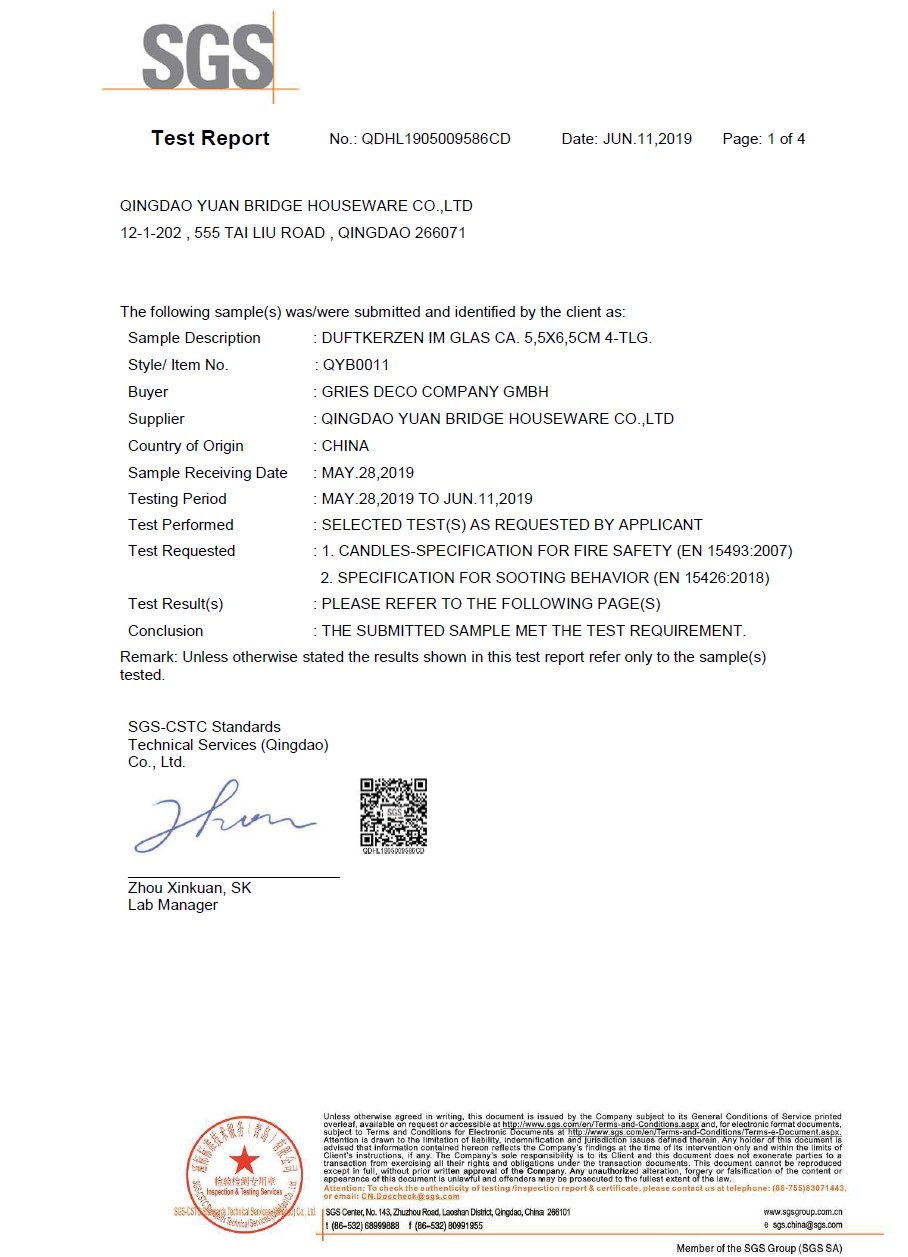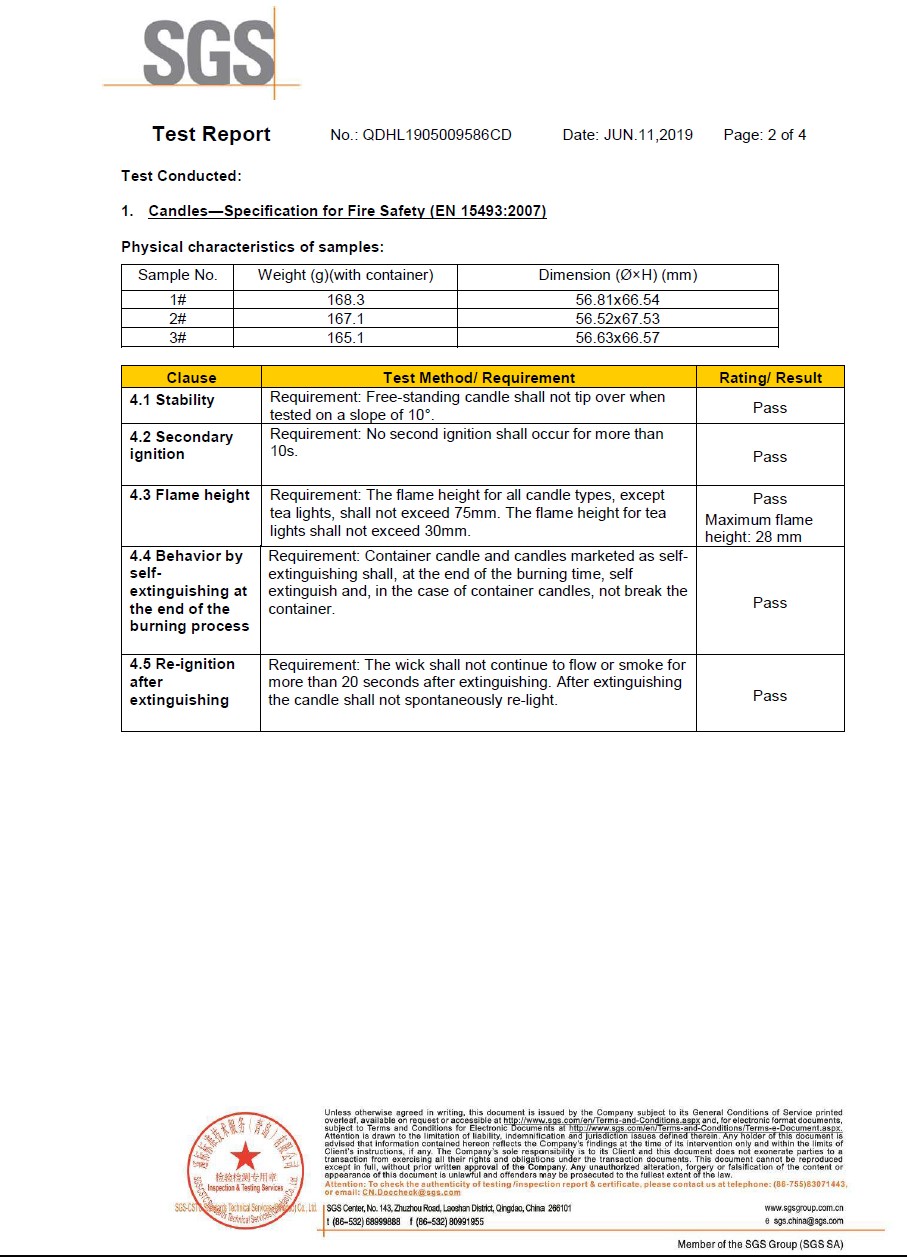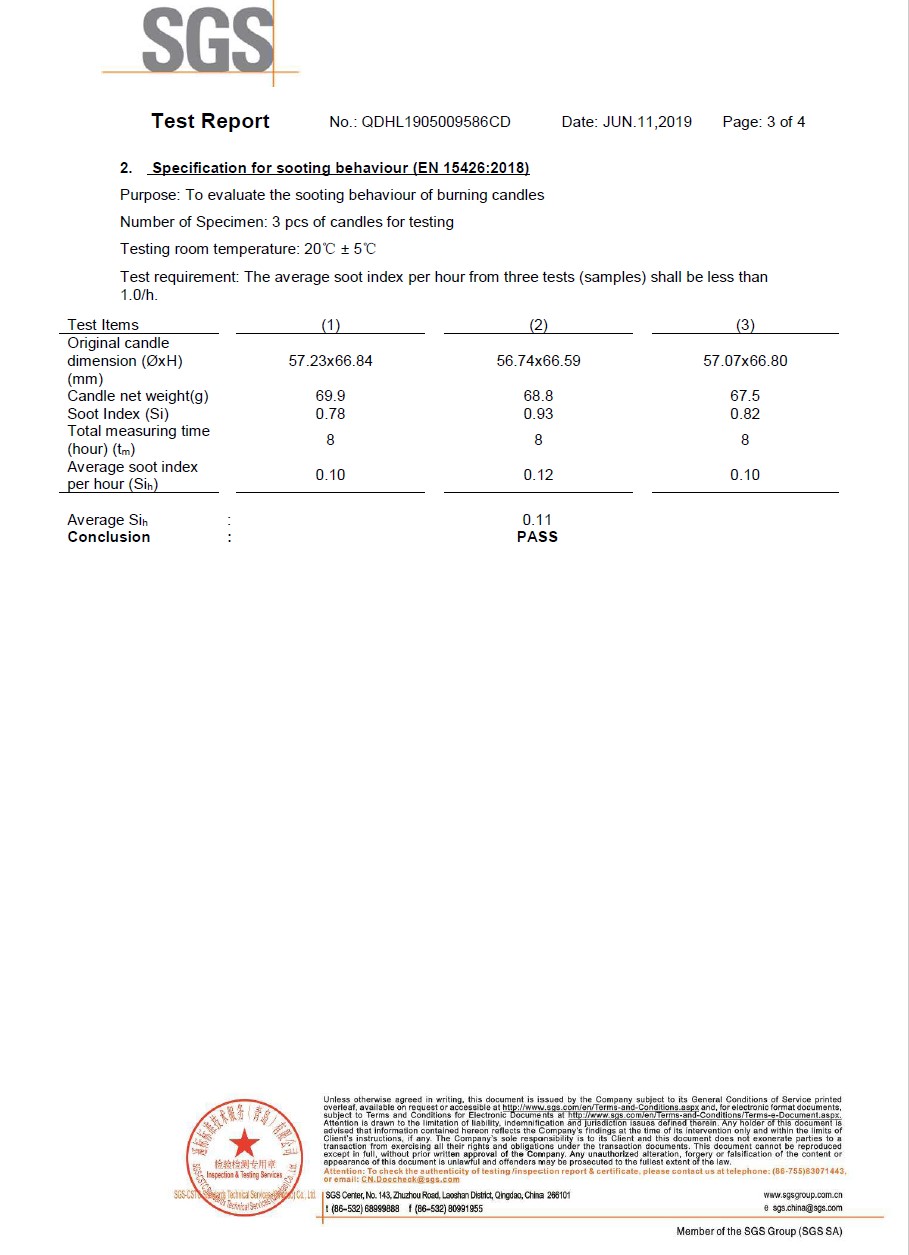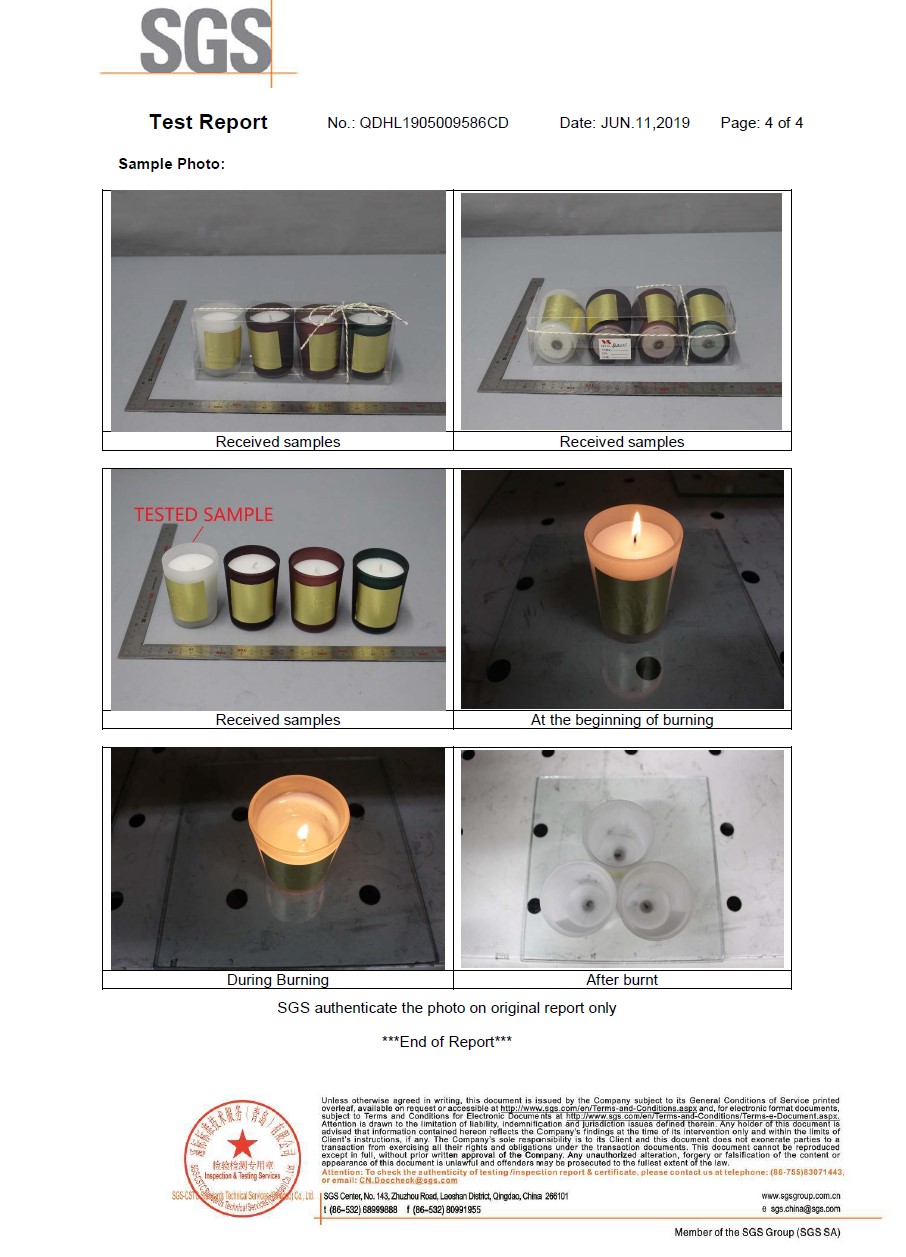- 28
- Jun
SGS Test Report -Candles-Specification For Fire Safety (EN 1593:2007) Specification For Sooting Behavior (EN 15426:2018) ,China Factory
Candles-specification for fire safety (EN 1593:2007)
It mainly test the stability of candle burning :Free-Standing candle shall not tip over when tested on a slope of 10 ° .
Secondary ignition : No second ignition shall occur for more than 10s .
Flame height : The flame height for all candle types ,except tea lights, shall not exceed 75mm . the flame height for tea lights shall not exceed 30mm .
Behavior by self-extinguishing at the end of the burning process : Container candle and candles marketed as self-extinguishing shall , at the end of the burning time , self extinguish and , in the case of container candles , not break the container .
Re-ignition after extinguishing : The wick shall not continue to flow or smoke for more than 20 seconds after extinguishing . After extinguishing the candle shall not spontaneously re-light .
Specification for sooting behavior (EN 15426:2018)
To evaluate the sooting behaviour of burning candles by measuring the net weight of the candle and the soot index in a fixed time at room temperature of 20℃ ± 5℃.
All tests are based on EU standards :(EN 1593:2007) (EN 15426:2018).
Qingdao Yuan Bridge Houseware Co., Ltd




Normalmente hai trazas de aditivos dentro da vela.
For example, a scented candle made of paraffin will add a small amount of microcrystalline wax: it will make the candle softer and help to remove the cotton wool produced during the cooling process of the paraffin, so that the paraffin does not crystallize excessively.
Add a small amount of ghee wax (extracted from animal milk): It helps the wax liquid and the essential oil to merge during the production process, making the wax block easy to shape, helping the wax block to break away from the glass wall, and the appearance becomes better. But the color is yellowish.
Stearic acid (vegetable or animal oil extract) : is added to help increase the hardness and whiteness of the candle, mask the color of the essential oil, relieve the black smoke of pure paraffin burning, and make the candle harder.
Oily pigment : Dye candles.
Non obstante, non se poden usar todos os aditivos ao mesmo tempo.
For example, the simultaneous use of stearic acid and ghee wax will cause a chemical reaction, which will make the surface of the candles pitted.
Stearic acid works opposite to microcrystalline wax, and the simultaneous addition means that the hardness of the candle is not changed.
Excessive stearic acid will quickly decolorize the wax block.
Polo tanto, as velas de diferentes deseños usan diferentes tipos e contidos de aditivos.
Partindo da premisa de garantir que a aparencia da vela estea limpa, a proba de combustión é o método máis probatorio para probar a fórmula da fábrica de velas.
